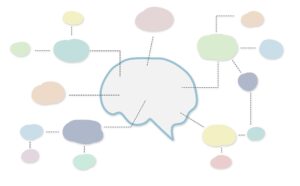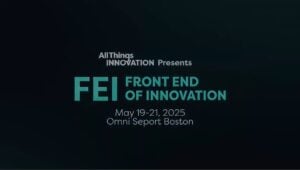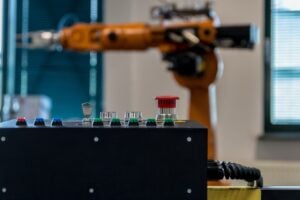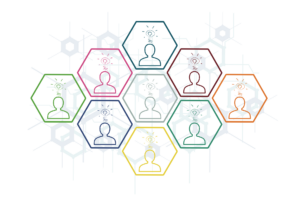Focus on the Front End of Innovation
What is up for debate right now in the innovation space? Despite the focus on technology like AI, for food and beverage innovation veteran Zeinab Ali, who recently retired after a career in senior research and development roles with brands like Campbell Soup Company, PepsiCo and Nabisco, it still comes down to the simplicity of knowing the consumer.
“The challenging piece that I see is more one of resources—the lack of resources. People don’t have the bandwidth to do a lot of things that they would love to do,” says Ali. “It’s the background work that really fuels innovation because people need a safe space and given the freedom to play. I think that we’re losing that. When the initiative or project arrives, with very little notice, we end up starting from scratch. There was no forethought, which makes it very challenging. Where does most of the shortcuts take place? In my experience, it’s the front end of innovation.”
She continues, “Let’s say the project was a one-year project. You skip the front end of innovation. You start failing with the consumer testing. Redo the concept many times. And by the time you launch the project, it is two years long. If you did the front end right, you could have made that project one year. The concept should be worked and cemented at the front end. Does the consumer want or need this? Can we make it? Can we make money? All those three questions should be answered upfront. My best practice advice is to spend as much time as possible on the front end because then from front end to the launch, it’s really a straight line.”
As for AI, Ali has mixed emotions. Certainly, as a tool we should embrace it. But just don’t get too lost in the algorithms. Again, focus on the consumer.
Ali observes, “I see reliance on technology, whether it be AI and social media more than actually connecting with the end user. What’s disappearing is the connection with the end user of your product because we’re relying on the algorithm. Yes, use it, but don’t use it instead of the consumer. Technology is supplemental, not the other way around. Because within the corporation, we drink our own Kool Aid. We get excited about what we offer. We get excited about the technologies that we deliver. We get excited about it because we have a patent. But I think the human factor will keep you humble and keep you focused and make you deliver the project on time with less costs because you’re not adding things that they don’t want. Don’t take the consumer focus away from innovators.”
Innovating on Process
Still, not everything about AI and technology should be feared. It just depends on your perspective, especially as it relates to process and the future development of your customer base.
Emil Georgiev, Vice President – Customer Experience Design, IKS Health, relates, “AI has changed the game of innovation in a very significant way because it has altered the way that a lot of the processes, optimizations, and workflows are happening. AI gives the base of the autonomous software that does everything on its own with very little or no human intervention. It changes in a significant way how people are interacting with your product or service. That necessitates rethinking of your whole philosophy of how you serve those customers. It creates a significant set of opportunities for process optimization, for being able to utilize information in new and novel ways that have not been used before. In that way, it improves all the operations, and improves the capacity of customers to understand what is going on.”
In healthcare, as Georgiev notes, it’s a technology that is influencing how patients interact with corporations, and how corporations interact with patients and other clients.
“With the ability to collect and process enormous amounts of information, it improves processes, improves analytics, the understanding of what is going on, and gives customers new levels to fine tune their operations. For us as vendors, for those customers, the customers being healthcare clinics, hospitals, and so on, we must make sure that we are at the cutting edge of what AI and machine learning can offer in order to make sure that these capabilities are built into what we offer as well,” says Georgiev.
The cost factor should not be overlooked when it comes to how AI can streamline the process.
Georgiev notes, “AI has done a significant level of innovation with respect to the overall cost of the services that we can deliver nowadays. Because more and more, this automation takes place in a way that removes cumbersome, costly and time sensitive processes that were done by people before. Not with very high level of accuracy. So the level of accuracy has increased. The productivity has significantly increased, but it changes some of the processes as well. Now we’re not talking about the AI innovating for you yet, but it seems like we are getting there. It is not a question of whether you utilize it, but how effectively you utilize it to stay competitive.”
What do you see on the horizon for innovation, especially in the context of AI’s influence?
Georgiev says, “Notwithstanding the emergence of AI that can make connections smarter than the human being, which I don’t want to explore at this point as a venue, but it may be coming. The advent of AI significantly enhances what a human being can do. For right now, I choose to at least look at this as a significant enhancement. Part of the future is to use the same innovation approaches that we have but building as many AI/ML enhancements along the way that we can envision. That becomes basically a way for us to innovate faster and innovate cheaper.”
There may be a level of foresight, Georgiev suggests, that AI can play a larger role in developing: “AI can enable you to conduct simulations faster, be able to anticipate what is coming, do projections, etc. I see a lot of work being done in development, this type of simulation model and the ability to use enhanced analytics to predict the future with a certain level of success. That gives you directional focus on where innovation should be focused going forward to a very significant degree if used correctly.”
“Innovation is something that happens, but it has to be directed. At least, in a private enterprise, it has to be directed in a way that aligns with the company’s vision and also with where those contributions are going to be most significant in terms of changing the life of our customers or their patients,” he says.
Coaching the Future of Innovation
Lisa Costello, Director and Head of Platform, Prologis Ventures, sees AI from a different lens, perhaps, than other innovation professionals.
“As I work in the venture capital environment, we can see that AI is often being overvalued by investors compared to the outcomes that it produces. That’s an unfortunate truth that we’re all going to realize in the next couple of years as we see these high valuations become more realistic,” says Costello.
“That said,” Costello continues, “AI is changing the game for every business, as it helps take a lot of the busy work out of what used to be required for innovation. Whether it’s analyzing large datasets or research that you would have normally had to sift through, or even analyzing large amounts of sentiment data to better understand how people feel or look at the world around them. If you can make sense of all that data more quickly, then you can get to insights a lot faster. Is it the disruptive technology that people say it is? Is it going to displace people? I think it’s too soon to tell how big the impact will be. But right now, we are seeing individuals spending time on more valuable activities like strategy and implementing ideas.”
She adds, “The mistake I’m seeing some organizations make is just telling individuals to ‘go use AI’. But this is limiting. At the end of the day, AI is a tool, just like any other technology. You have to start with the business problem – the sticking point or friction area – and then use AI to solve it.”
Apart from AI, Costello sees other shifting trends that have impacted innovation, and hence, innovation best practices. One aspect is the structure of the innovation team.
“There’s been a long-standing debate about whether innovation teams should sit within the core organization, under its direct oversight, or operate more independently to allow ideas to flourish. Both approaches have pros and cons, but in my experience, there’s real value in staying close to the core business,” says Costello.
“You get access to customers, insight into what the core business prioritizes, and the opportunity to consistently show value. This is critical for innovation teams, especially when budgets tighten. Because being close to the company not only helps demonstrate impact on business outcomes but also enables more frequent communication and alignment with senior executives, which is what keeps these teams supported and thriving,” she says.
Getting Close to Customers
“When it comes to thinking about the long-term sustainability of our business, continuing to drive value and revenue for the company comes in a lot of different forms, and it doesn’t require these fancy innovation labs or even big budgets,” observes Costello. “It can work within the constraints of the organization and actually use those constraints to fuel bigger ideas because you’re so close to the end customer and to what their challenges are.”
The future seems bright for innovation, with AI there to help support the generation of ideas and the broadening of innovation to all parts of the organization.
Costello adds, “AI can help individuals at different levels of the organization work through their ideas in a new way. There are associates who might have great ideas because they’re so close to the problem and to customers. If you can use AI to empower them and coach them through developing those ideas, then they should be able to implement more of them. All of your ideas can’t come from the top down or you’re going to be missing out on a lot of opportunities.”
“Budgets get controlled around a boardroom table, but the best ideas aren’t usually formed there. They start on the floor with your customers,” she says.
Editor’s Note: This is part 2 of a two-part blog on innovation best practices. Part 1 looked at AI and creative velocity, while part 2 examined AI, the front end of innovation and more.
Video courtesy of R&D Today
Contributor
-

Matthew Kramer is the Digital Editor for All Things Insights & All Things Innovation. He has over 20 years of experience working in publishing and media companies, on a variety of business-to-business publications, websites and trade shows.
View all posts





















































































































































































































































